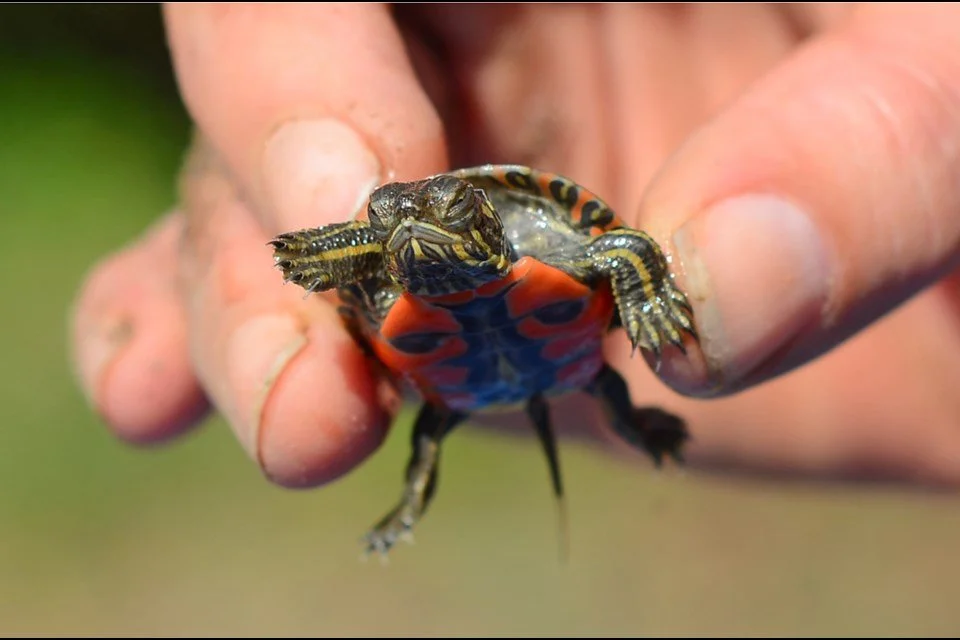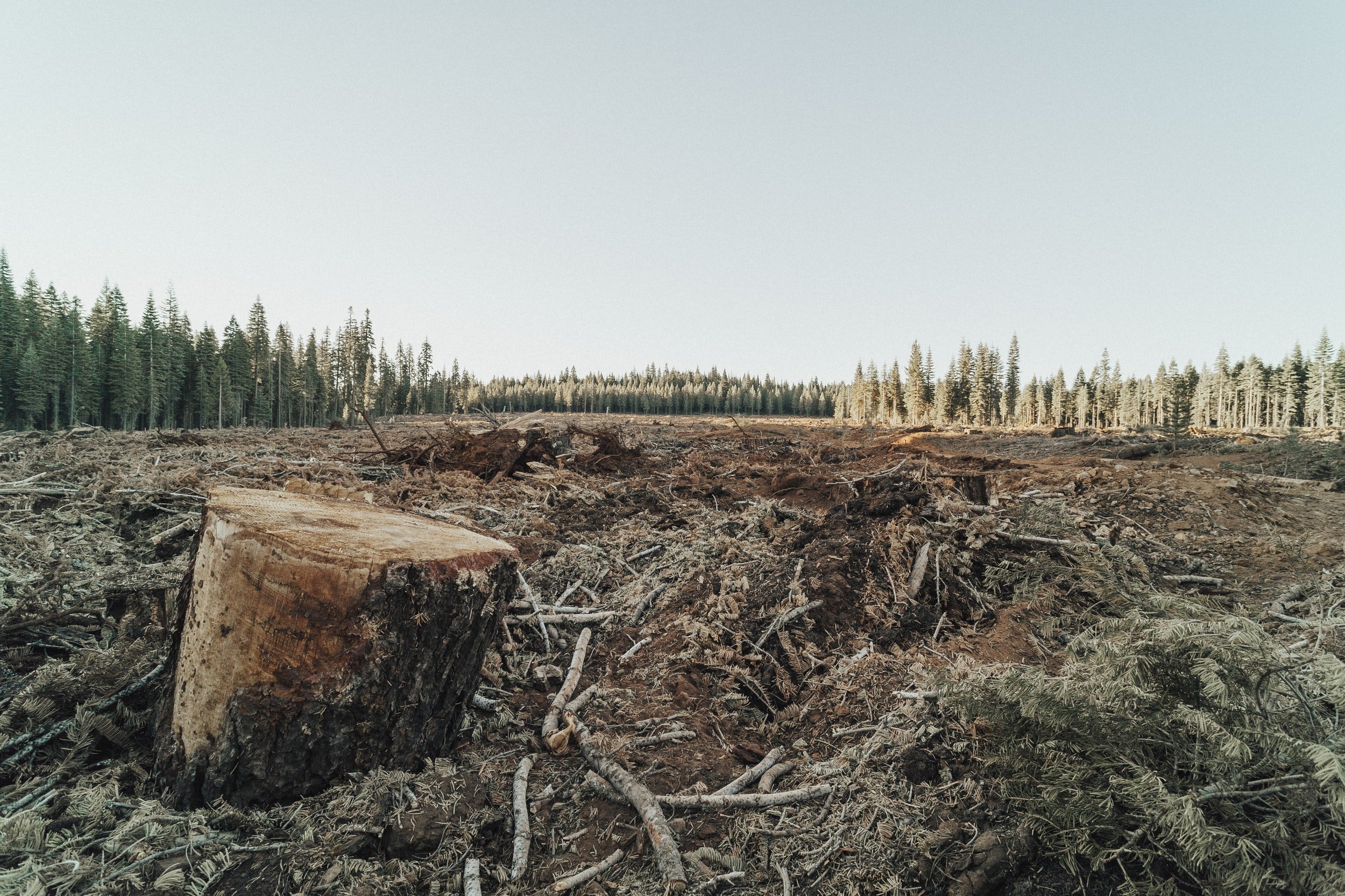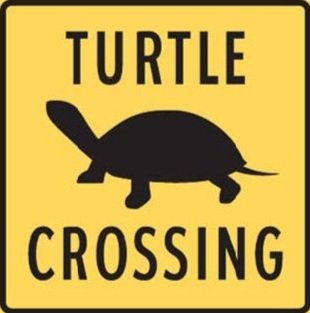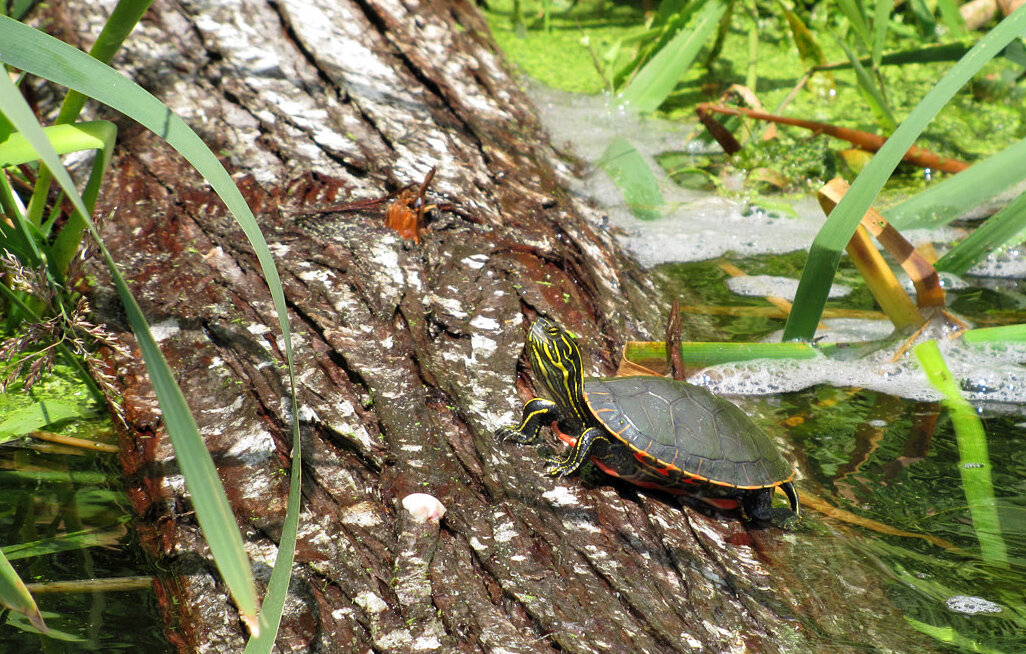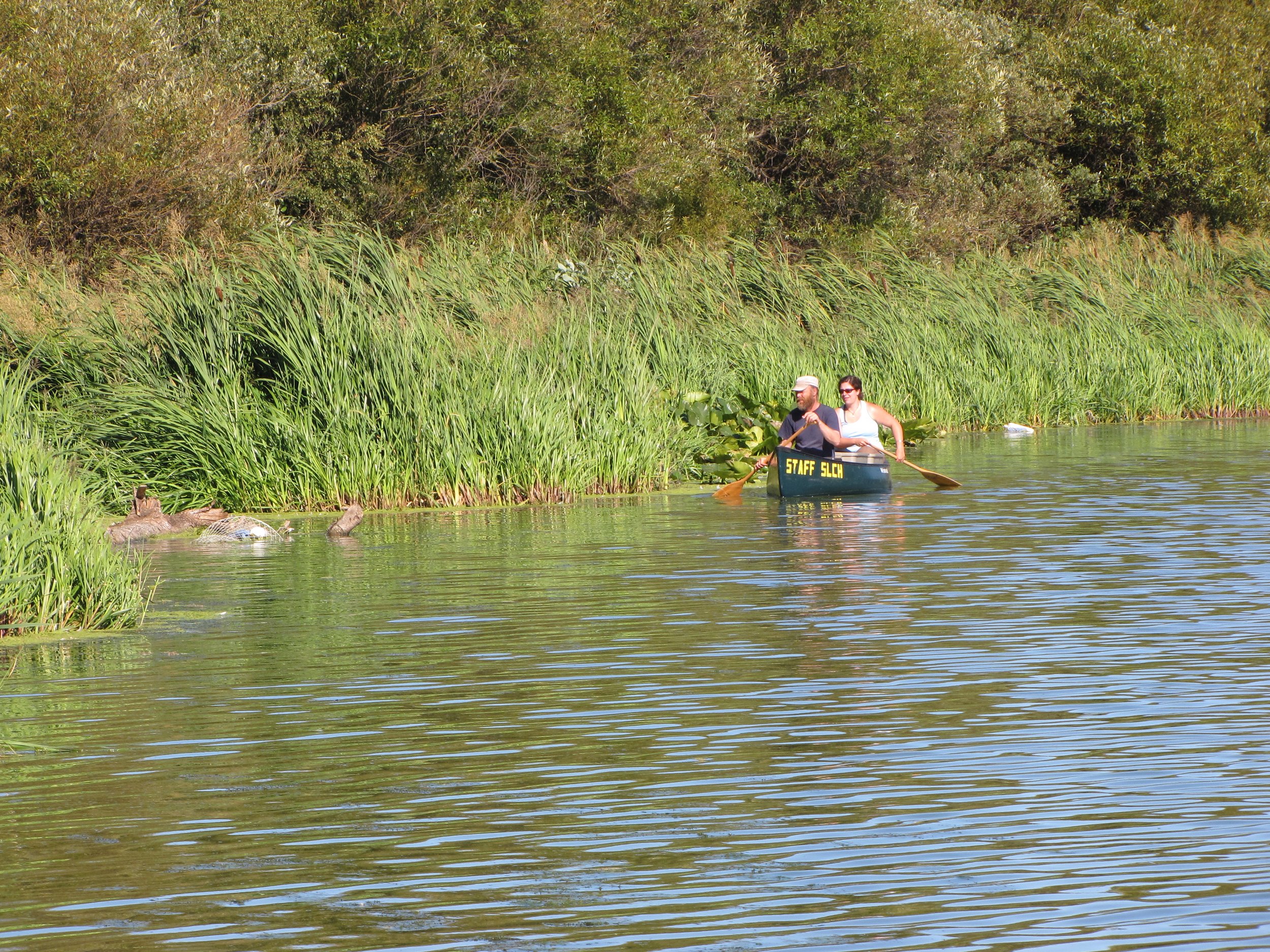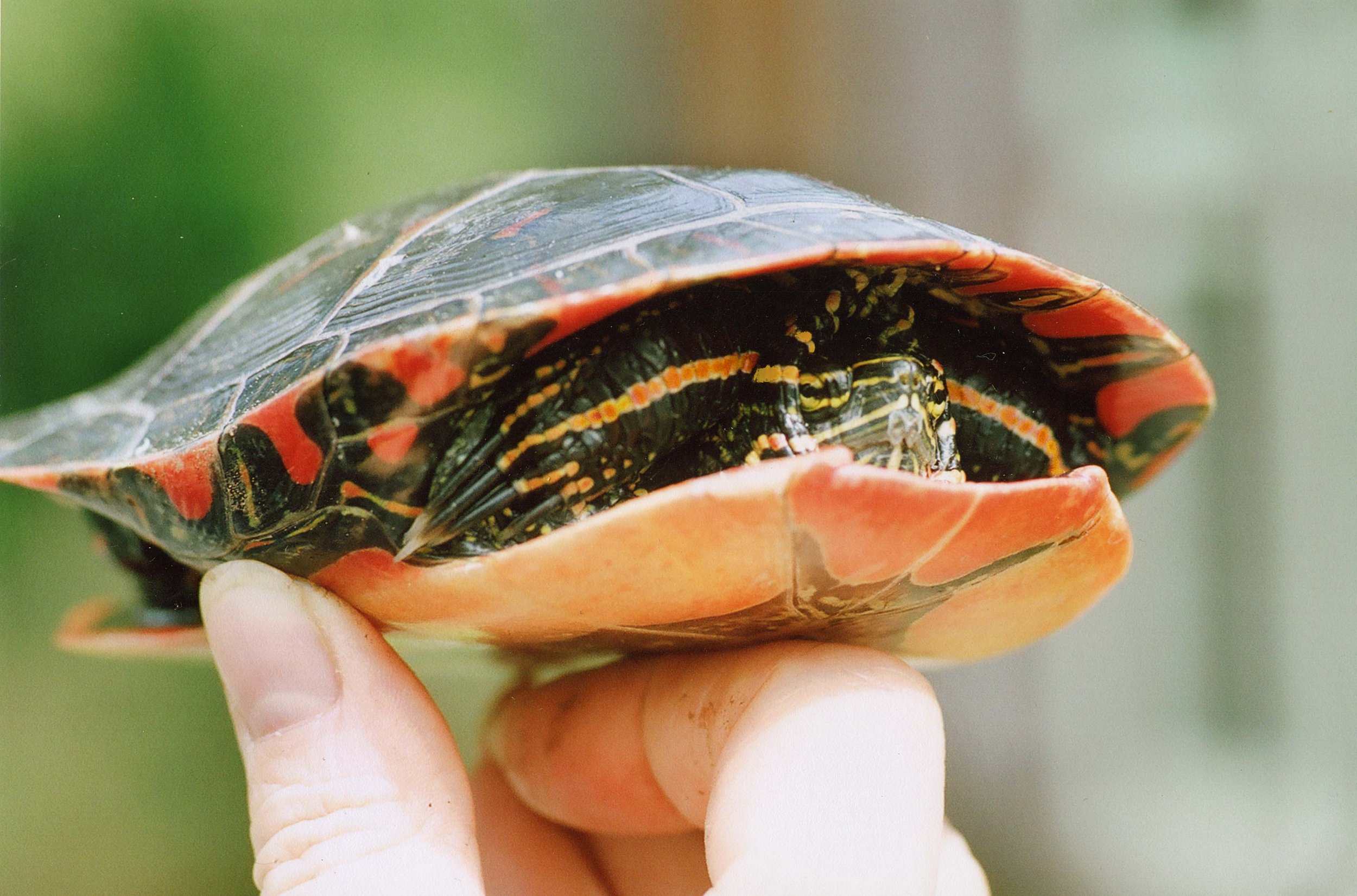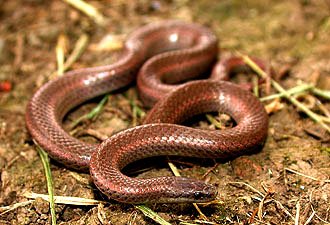
Western Painted Turtle
(Chrysemys picta bellii )
Photo: Woody Thomson
This freshwater reptile is Vancouver Island's only remaining native turtle species and it’s endangered.
COSEWIC Status: Threatened
SARA Status: Endangered
Provincial Status: S2
BC List Status: Red (Extirpated, Endangered, or Threatened status)
In British Columbia (BC), there are two populations: Intermountain - Rocky Mountain Population in the southern interior and Pacific Coast Population in the southwest. The coastal population is found in the Lower Fraser Valley and Sunshine Coast on the mainland, and Vancouver Island, and some of the Gulf Islands in the Strait of Georgia.
-
Size: Can reach 25cm in length.
Colour: Dark olive-green to brown carapace (upper shell) and vibrant orange plastron (ventral/bottom shell) with a central black and yellow pattern radiating outwards.
Distinguishing features: Orange plastron and absence of red marking behind eye extending to ear, which is indicative of the non-native Red Eared Slider.
For more information about identification, check out the BC Ministry of Environment’s Western Painted Turtle Identification Guide. If you have a photo of a turtle you are having difficulty identifying, please email it to hatmail@hat.bc.ca.
-
Distribution and Habitat
The Western Painted Turtle has a wide distribution in western North America, including western Canada south of the 51st parallel. In BC, there are two populations: Intermountain - Rocky Mountain Population in the southern interior and Pacific Coast Population in the southwest. The coastal population is found in the Lower Fraser Valley and Sunshine Coast on the mainland, and on Vancouver Island and some of the Gulf Islands in the Strait of Georgia.
These turtles live in freshwater environments including ponds, lakes, oxbows, marshes and slow-moving streams. They prefer sites with muddy substrate, emergent aquatic vegetation, exposed vegetation roots, logs, and open banks. Logs, branches and roots provide basking (warm-up) locations. Nesting habitats are on land usually within 200m of water.
On southern Vancouver Island, they have been observed in Elk-Beaver Lake, Swan Lake, and Matheson Lake. Look for them basking on logs in the water, but please keep your distance and do not disturb them.
-
The Western Painted Turtle has a wide distribution in western North America, including western Canada south of the 51st parallel. In BC, there are two populations: Intermountain - Rocky Mountain Population in the southern interior and Pacific Coast Population in the southwest. The coastal population is found in the Lower Fraser Valley and Sunshine Coast on the mainland, and on Vancouver Island and some of the Gulf Islands in the Strait of Georgia.
These turtles live in freshwater environments including ponds, lakes, oxbows, marshes and slow-moving streams. They prefer sites with muddy substrate, emergent aquatic vegetation, exposed vegetation roots, logs, and open banks. Logs, branches and roots provide basking (warm-up) locations. Nesting habitats are on land usually within 200m of water.
On southern Vancouver Island, they have been observed in Elk-Beaver Lake, Swan Lake, and Matheson Lake. Look for them basking on logs in the water, but please keep your distance and do not disturb them.
-
The distribution of the Pacific Coast population overlaps with the densely populated and highly modified areas, where urban development, drainage of wetlands, forestry, road building, and other human activities threaten turtle populations. Turtles are also at risk of being run-over by vehicles when crossing road between their wetland homes and on-land nesting habitats.
These turtles require wetland habitats for foraging and hibernation and suitable warm sites on land for egg-laying. Egg-laying habitats are often in short supply and a limiting factor for this species and other freshwater turtles.
Western Painted Turtles also compete for food and habitat against invasive species, such as the Red-Eared Slider.
![cathytur2[1].jpg](https://images.squarespace-cdn.com/content/v1/5e3c5b7e5460c55405a6d4d6/ce9a4761-dc59-4147-95f4-465f7d4c53e4/cathytur2%5B1%5D.jpg)
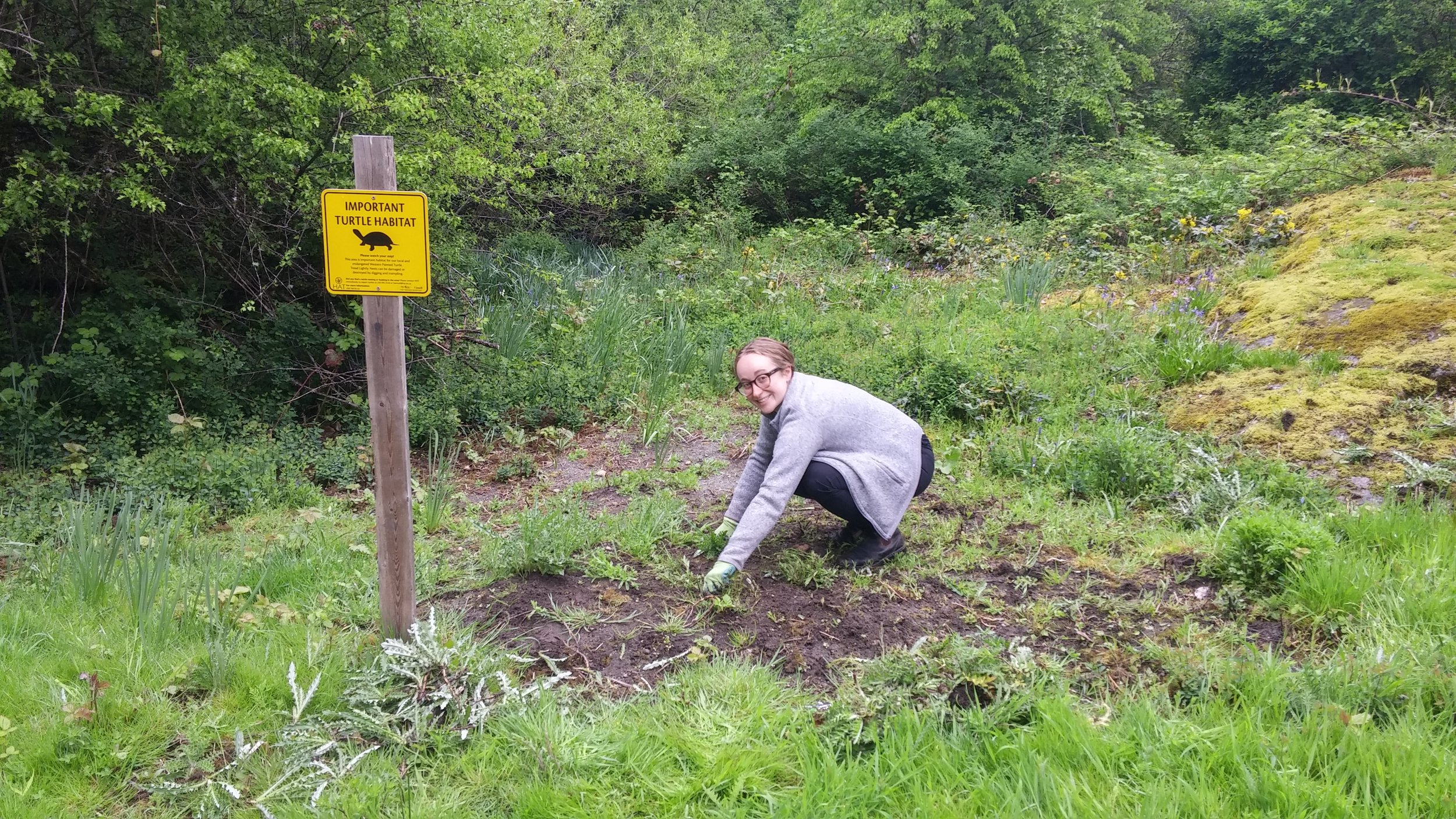
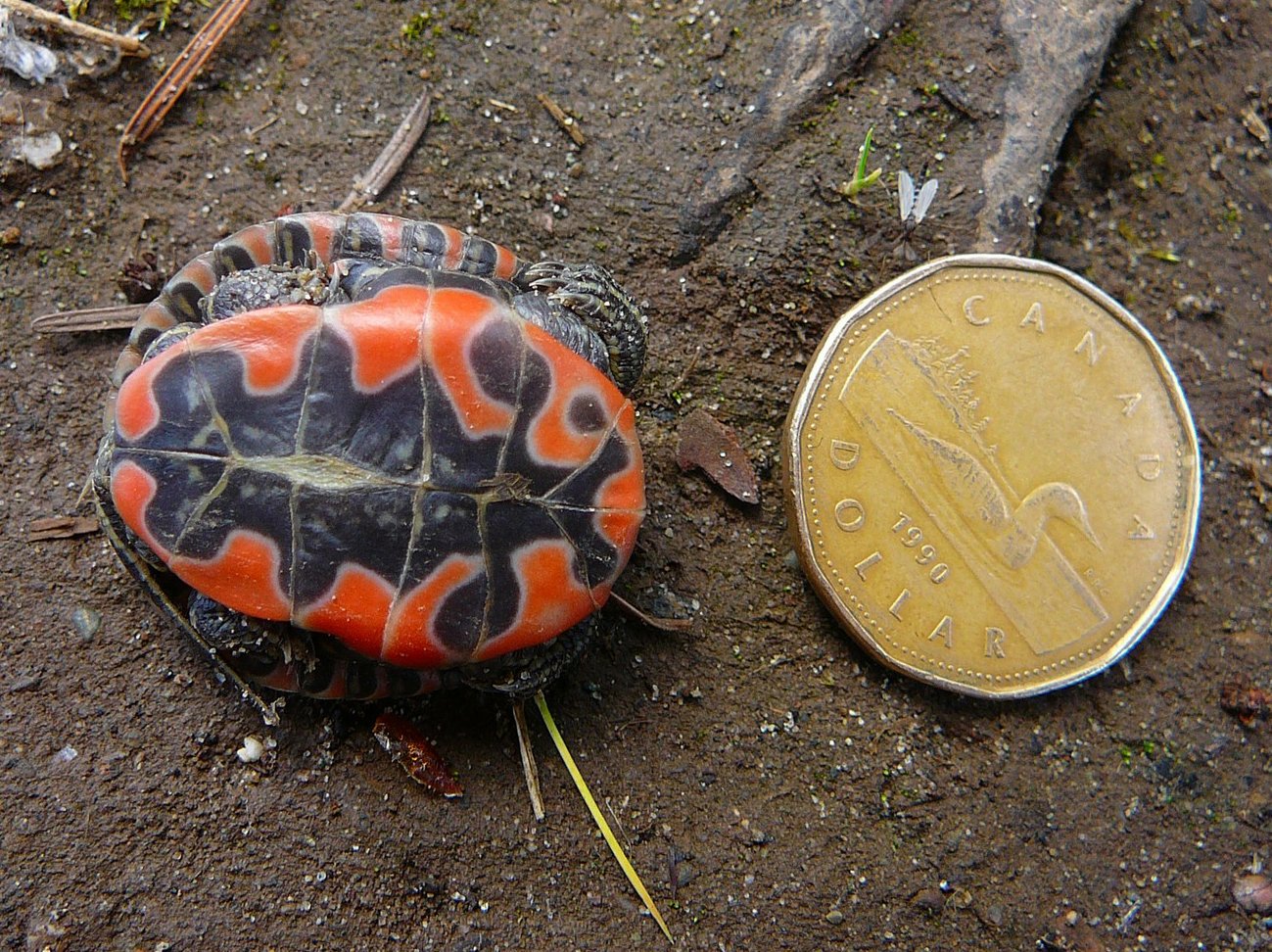

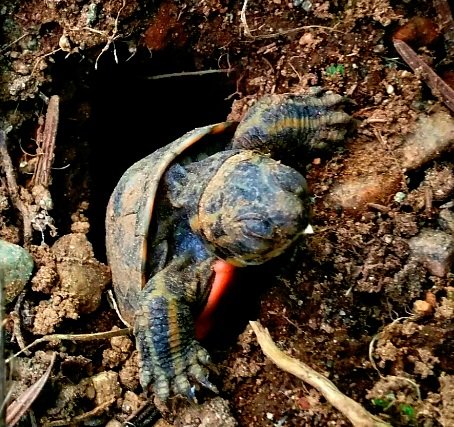
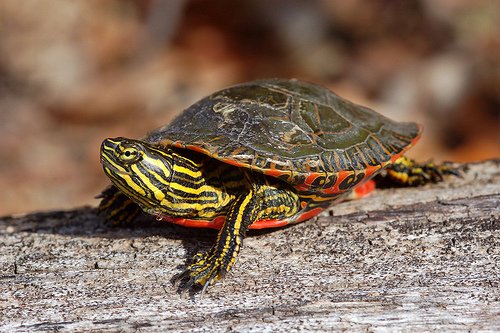
Western Painted Turtle FAQs
-
The Red Eared Slider (right) is an invasive species native to southeastern United States and south through Mexico, Central America and Brazil. They were introduced to BC through direct release from people who no longer wanted to care for their turtle pets (that can live to be 50 years old). They can be identified by their ‘red ear’ marking, which is absent in Western Painted Turtles. They also have a rougher and rounder carapace (top shell) and lack the bright orange markings found on the Western Painted turtle’s plastron (bottom shell)
The BC Ministry of the Environment’s Western Painted Turtle Identification Guide is an excellent resource for differentiating between Western Painted Turtles and Red Eared Sliders. If you have a photo of a turtle you’d like help identifying, please email it to hatmail@hat.bc.ca.
-
Turtles found on land are not lost. They are likely coming to or from their ground-based nests up to 200 meters from the water. Only move turtles if they are in danger, and do not confine them. Watch for nesting turtles on south-facing open slopes near ponds and wetlands in the following watersheds: Hagan, Tetayut, Bilston, Craigflower, and Colquitz. Please report and photograph all observations to HAT at 250 995 2428 or hatmail@hat.bc.ca.
-
Pretty amazing, right? Some turtle species are able to significantly drop their body temperature so their energy requirements are considerably low. The colder temperatures over the winter (and being underwater) also cause very minimal blood oxygen levels, allowing submersion for 3-4 months! These turtles also have the ability to ‘breathe’ through their skin and store glycogen (sugar) in their bodies which generates energy without needing oxygen.
Check out this article in the Journal of Physiology: Hibernating without oxygen: physiological adaptations of the painted turtle
-
Many people are concerned for Western Painted Turtles they find in unexpected places, including backyards, roads, and ditches. While it is tempting to "help", often we ending doing more harm than good. Turtles are almost never lost - they are where they are for reason, even if it's only known to them. Sometimes, unfortunately, where they are is not safe, and that's when it's time to help. If the turtle is in immediate danger, such as on a road, please move it out of danger in the same direction it was facing.
Try to snap a photo of the turtle and record the location, date and time of your observation. Email us this information at hatmail@hat.bc.ca. Your observations are important for monitoring these Species at Risk populations and distributions.
-
Turtles typically live in wetlands or lakes, but they do use "dry land" for nesting and mitigation. If you find a turtle on your property, please record and report it to us, but try to interfere with it as little as possible. Some land care practices can make life very difficult for turtles. Retaining walls are impossible for turtles to climb, and replacing sandy soils with turf can accidentally disrupt nesting sites. If you live in an area frequented by Western Painted Turtles, HAT would be happy to visit you, and help you find ways to conserve habitat features on your property that are important for turtles and other species that rely on wetlands and riparian areas.
Baby Western Painted Turtle
Watch this video of this adorable baby Western Painted Turtle make its way over rocks and through moss on its search for…. well I’ll be darned we forgot to ask!

What is HAT doing to help Western Painted Turtles?
Surveys
Since 2008, HAT has surveyed over 100 wetlands for turtles. The surveys have mainly occurred in the Capital Regional District and Alberni Valley. The sites have included water bodies in urban, rural and forested backcountry areas, and were selected based on habitat suitability assessments or tips from residents. The Western Painted Turtle has been observed sporadically throughout the areas surveyed on the south and east Vancouver Island and in the Alberni Valley; in total, we have found this species in 15 (15.8%) of the sites surveyed. We also solicited information from the public through the media and HAT’s outreach program. These efforts resulted in additional observations of Western Painted Turtle on land or from small ponds within residential areas. On southern Gulf Islands, we were unable to confirm the presence of the Western Painted Turtle on Pender or Galiano islands. However, the species occurs at several sites on Saltspring Island, where the Salt Spring Island Conservancy has carried out surveys and collected records from residents.
Information was also obtained on introduced turtles, of which the Red-eared Slider was the most commonly encountered species (found at 21 or 22% of the sites surveyed from 2008 to 2011). Most likely, these turtles were released pets, as there is no evidence of them successfully breeding in the wild in BC. Release of captive turtles into nature is illegal and potentially harmful for native turtles and other wildlife; introduced turtles can spread diseases or compete for nesting sites, food, or other resources with native species. We also occasionally encountered other exotic turtles, such as the Reeves Pond Turtle, Eastern Painted Turtle, and Cumberland and Yellow Belly sliders.
Threat Assessments
On southern Vancouver Island, populations of the Western Painted Turtle occur within urban and rural areas, and are threatened from shoreline development, intensive recreational use, road mortality, and nest predation by raccoons, other predators, and/or free-roaming pets. In Alberni Valley, turtles occur within forestry lands and are vulnerable to some activities associated with forest harvesting, such as modification of water regimes and modification of riparian habitats, and from road kill on logging roads while migrating between water bodies and nesting areas on land. In all areas, turtles are particularly vulnerable on nesting grounds, and it is important that these areas be identified and protected from disturbance. Part of our work has been to identify locations and type of habitats that turtles use for nesting.
Basking Log Installation
Basking logs are a critical habitat feature for Western Painted Turtles and many other wetland species, including frogs and birds. Unfortunately, naturally occurring logs in lakes and wetlands are often removed due to the hazard they create for boats, or for aesthetic reasons. In lakes and wetlands lacking appropriate basking logs, HAT will install logs for turtles and other wildlife to use. We continue to refine our design to create functional, natural looking logs that will last many years.
Road Mortality Signage
Turtles often cross roads to reach nesting sites, when young emerge from nest sites and move to water bodies, and to migrate to new waterbodies. HAT worked with the District of Saanich to install road signs at one particularly dangerous crossing on Beaver Lake Road. We also provide informal signs for landowners to post on their property near other danger areas.
Nest Site Protection & Enhancement
In collaboration with landowners and volunteers, we have undertaken nest habitat creation or restoration at three sites. Monitoring the effectiveness of the restoration activities is on-going, but initial results are promising. For more information
Management Planning
HAT will prepare Management Plans for landowners that have Western Painted Turtles or nest sites on their property. These plans will help landowners conserve this habitat for future.
Landscape Use (Telemetry) Study
HAT is continuing to study how Western Painted Turtles use the landscape around Swan Lake Nature Sanctuary through tracking 6 turtles that have been tagged with radio-telemetry devices. By understanding how turtles use this complex landscape with roads, trails, multiple nest sites, and heavy recreational use, we can better conserve important habitat features, and protect turtles, and nests, from threats.
Learn More with our Stewardship Guides
-

Wetlands
-
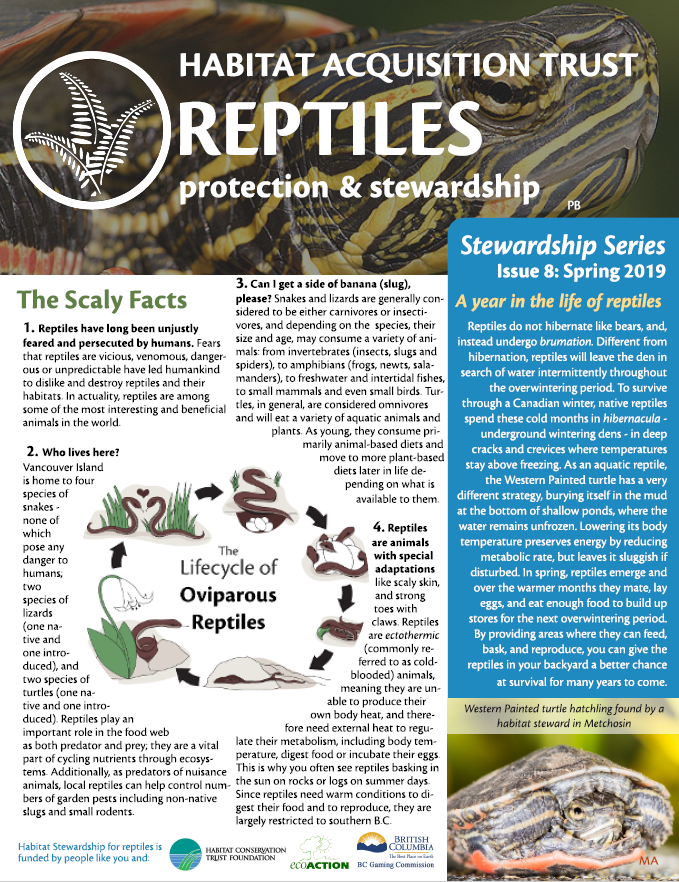
Reptiles
-

Riparian
Looking for more information and resources?
Check out our reports, stewardship guides, and identification documents by following the link below.
Check out these resources for more information about Western Painted Turtles
Government of Canada Species At Risk (SARA) Western Painted Turtle Profile
Committee on the Status of Endangered Wildlife in Canada (COSEWIC) Assessment and Status Report on the Western Painted Turtle (2009) (pdf)
BC Ministry of Environment Recovery Strategy for the Western Painted Turtle (Chrysemys picta bellii) Pacific Coast population in Canada (2018) (pdf)



